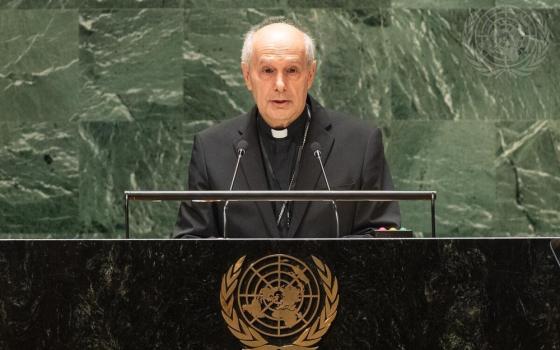The wide-lens view of today's New York Times' dig into the dense and logic-defying maze of church law and bureaucracy is the latest needed bit of light shed on a culture that struggles today to find its way clear of the sex abuse crisis.
The interviews with archbishops and bishops and their recollections of the tone of a secret Vatican meeting in 2000 are telling indicators of how aware the Vatican was of the scope of the scandal, of what it could do about it, of its unwillingness to confront the problem and of the ridiculous nature of analyses offered by some at the highest echelons of church governance.
Anyone mildly familiar with church culture – with rectories and seminaries and the workings of the local diocese – was aware that bad actors were being shielded and that victims of sometimes horrific abuse were being marginalized and re-victimized with countersuits and public disparagement.
Certainly by the late 1980s among members of the hierarchy lots was known. John Paul II chose to ignore some of the most egregious incidents and actors. He could become terribly indignant about liberation theologians (without whom the face of Latin America would arguably have been far bloodier and oppressed), about nuns who questioned an all male clergy, about thinkers and writers who dared question the increased centralization of church power and what was being referred to as the “creeping infallibalism” of the papacy. But about those who repeatedly molested and raped the community’s children? No urgency there from the papal throne.
What continues to come bare in all of the recent reporting globally is the degree to which the clerical culture worked, mostly without instruction, on instinct from centuries of silent training in the behavior of the royal court, to save itself as the scandal unraveled.
The New York Times, an easy target and hardly always correct, has been accused of anti-Catholic bias. So has The Boston Globe, the Dallas Morning News, the Los Angeles Times, the Philadelphia Inquirer, and on and on, as the scandal of child sex abuse has erupted from one place to another. So has NCR, countless times, though it must be said that many of us on staff have heard privately -- as the scandal grew and cases like that of Marcial Maciel Degollado and the Legionaries of Christ proved worse than anyone imagined at the start -- from previous critics and skeptics acknowledging graciously that we’d had it right.
This is an ugly story with no end in immediate sight. The Times story today is a valuable contribution to the record.




